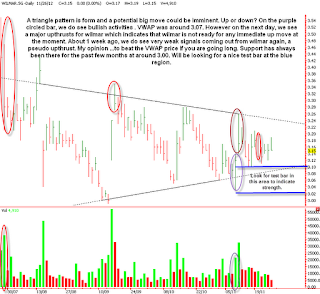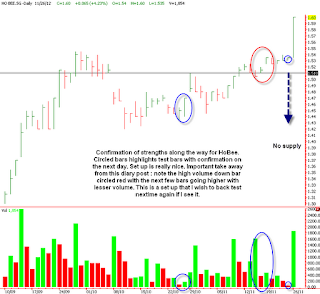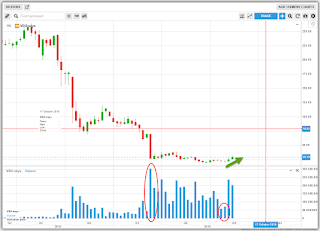Our STI - A number's game
View on the article below
To add on, the heavy weight counters such as the 3 banks, 3 jardines, hk land, FNN, singtel has been doing relatively well to the sinking
ships such as wilmar,noble etc. These heavy weight counters constitutes about at least 50% of the STI.
So, if you think STI is at its high now? Think again, dont be fooled by the numbers. (from fb post)
The lastest financial result from the majority commodities stocks are not doing exactly what investor want. If you are still keen on going
on them, do have a stop loss in mind. Why you might think commodities are already on their low, they can always go lower. If you
already have long positions in some of these highly volatile counters, the best strategy could be doing a hedge against it.
from : http://www.businesstimes.com.
Don't confuse STI with the market - On Aug 6, the index closed at a 12-month high but, at the same time, 9 in 10 stocks were down
By R Sivanithy, Senior Correspondent, Business Times
SEVEN days ago on Aug 6, the Straits Times Index (STI) closed at a one-year high of 3,071.82. Taken at face value, it was tempting to describe the market as being at the highest in 12 months, since many take for granted that the index represents the market.
As we have seen, this was in fact the case with some analysts, who predicted more upside simply because the market had risen to a one-year high.
Whether or not the index can continue rising is, of course, open to debate and highly dependent on external developments, most notably the economies of Europe and the US and whether their monetary authorities are successful with their bailout efforts.
But to conclude that the local market had reached a one-year high simply because the STI was at a one-year high is inaccurate. The reason? The index is much swayed by a few heavyweights, most notably the Jardine group and the banks whose outperformance has not been mirrored in most of the rest of the market.
Take, for instance, the 30 index stocks. Only nine, or 30 per cent, of the STI constituents actually finished at a 12-month high last Monday - Jardine Matheson, Jardine Strategic, CapitaMall Trust, CapitaMalls Asia, City Developments, ComfortDelgro, DBS, Global Logistics and UOB.
The rest were not at their highest in a year. On average, the remaining 21 were 7.4 per cent below their respective highs, the worst off being the three commodity stocks Wilmar International, Noble Group and Olam International whose falls from their 12-month highs were respectively 45 per cent, 32.2 per cent and 31.5 per cent.
Others with double-digit losses from their 12-month highs were Genting Singapore (-27 per cent), NOL (-19 per cent) and SembCorp Marine (-9.8 per cent).
Meanwhile, possibly the best proxy for the Singapore market, the Singapore Exchange (SGX), was 7 per cent down from its 12-month high.
Perhaps just as interesting as examining the index is to look at the entire market, comprising roughly 784 stocks. Here, the mistake of equating the index with the market is even more obvious - only 58 stocks comprising some 7.4 per cent of the whole market were at their 12-month highs on Aug 6. On average, the remaining 92.6 per cent of the market, or 726 stocks, were 23 per cent down from their highest levels in the preceding 12 months. Of course, these numbers are heavily skewed by the collapse of dozens of penny stocks whose percentage losses run as high as 80-90 per cent in some cases, but the fact remains that only a very small fraction of the entire local stock market - SGX included - did actually finish at a one-year high last Monday.
An additional problem with simply taking the index at face value is that it does not factor in liquidity, which is crucial if proper conclusions are to be drawn. Daily volume has been low for about for about four months now and last Monday's haul of 1.4 billion units worth $1.1 billion was in line with recent poor averages.
Looking only at price is tantamount to looking at only half the picture because low volume - particularly in certain index heavyweights that were influential in the index's performance - can lead to large price swings and increased volatility, which in turn presents a distorted picture of prevailing conditions.
So it is that without taking into account turnover and without looking beyond the headline numbers, it is incorrect to state that the market reached a one-year high on Aug 6.
Instead, it is more accurate to say that, though the STI closed at the highest in 12 months on Aug 6, it did so because of the outperformance of a small handful of stocks, in low volume and with more than 90 per cent of the market lagging a considerable distance behind.
To add on, the heavy weight counters such as the 3 banks, 3 jardines, hk land, FNN, singtel has been doing relatively well to the sinking
ships such as wilmar,noble etc. These heavy weight counters constitutes about at least 50% of the STI.
So, if you think STI is at its high now? Think again, dont be fooled by the numbers. (from fb post)
The lastest financial result from the majority commodities stocks are not doing exactly what investor want. If you are still keen on going
on them, do have a stop loss in mind. Why you might think commodities are already on their low, they can always go lower. If you
already have long positions in some of these highly volatile counters, the best strategy could be doing a hedge against it.
from : http://www.businesstimes.com.
Don't confuse STI with the market - On Aug 6, the index closed at a 12-month high but, at the same time, 9 in 10 stocks were down
By R Sivanithy, Senior Correspondent, Business Times
SEVEN days ago on Aug 6, the Straits Times Index (STI) closed at a one-year high of 3,071.82. Taken at face value, it was tempting to describe the market as being at the highest in 12 months, since many take for granted that the index represents the market.
As we have seen, this was in fact the case with some analysts, who predicted more upside simply because the market had risen to a one-year high.
Whether or not the index can continue rising is, of course, open to debate and highly dependent on external developments, most notably the economies of Europe and the US and whether their monetary authorities are successful with their bailout efforts.
But to conclude that the local market had reached a one-year high simply because the STI was at a one-year high is inaccurate. The reason? The index is much swayed by a few heavyweights, most notably the Jardine group and the banks whose outperformance has not been mirrored in most of the rest of the market.
Take, for instance, the 30 index stocks. Only nine, or 30 per cent, of the STI constituents actually finished at a 12-month high last Monday - Jardine Matheson, Jardine Strategic, CapitaMall Trust, CapitaMalls Asia, City Developments, ComfortDelgro, DBS, Global Logistics and UOB.
The rest were not at their highest in a year. On average, the remaining 21 were 7.4 per cent below their respective highs, the worst off being the three commodity stocks Wilmar International, Noble Group and Olam International whose falls from their 12-month highs were respectively 45 per cent, 32.2 per cent and 31.5 per cent.
Others with double-digit losses from their 12-month highs were Genting Singapore (-27 per cent), NOL (-19 per cent) and SembCorp Marine (-9.8 per cent).
Meanwhile, possibly the best proxy for the Singapore market, the Singapore Exchange (SGX), was 7 per cent down from its 12-month high.
Perhaps just as interesting as examining the index is to look at the entire market, comprising roughly 784 stocks. Here, the mistake of equating the index with the market is even more obvious - only 58 stocks comprising some 7.4 per cent of the whole market were at their 12-month highs on Aug 6. On average, the remaining 92.6 per cent of the market, or 726 stocks, were 23 per cent down from their highest levels in the preceding 12 months. Of course, these numbers are heavily skewed by the collapse of dozens of penny stocks whose percentage losses run as high as 80-90 per cent in some cases, but the fact remains that only a very small fraction of the entire local stock market - SGX included - did actually finish at a one-year high last Monday.
An additional problem with simply taking the index at face value is that it does not factor in liquidity, which is crucial if proper conclusions are to be drawn. Daily volume has been low for about for about four months now and last Monday's haul of 1.4 billion units worth $1.1 billion was in line with recent poor averages.
Looking only at price is tantamount to looking at only half the picture because low volume - particularly in certain index heavyweights that were influential in the index's performance - can lead to large price swings and increased volatility, which in turn presents a distorted picture of prevailing conditions.
So it is that without taking into account turnover and without looking beyond the headline numbers, it is incorrect to state that the market reached a one-year high on Aug 6.
Instead, it is more accurate to say that, though the STI closed at the highest in 12 months on Aug 6, it did so because of the outperformance of a small handful of stocks, in low volume and with more than 90 per cent of the market lagging a considerable distance behind.



Comments
Post a Comment